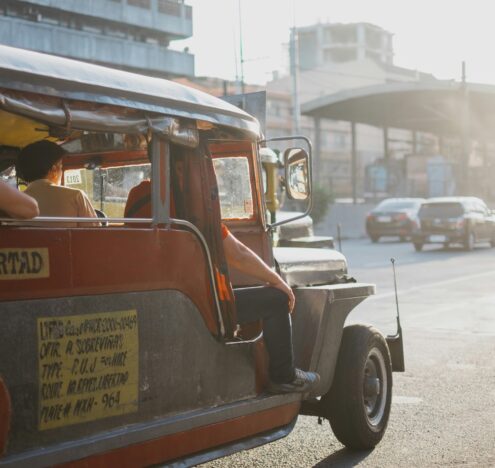The question of whether to send cluster munitions to Ukraine is both ludicrous and tragic at the same time. I am gravely concerned by President Joe Biden’s decision to transfer these deadly anti-personnel cluster munitions to Ukraine or anywhere else. I have personal experience and a relationship to their use because of the nine-year bombing campaign the United States conducted during its “secret war” in Laos from 1964 to 1973.
I enlisted in the US Army Security Agency, the signals intelligence branch of the US Army from 1945-1976, in March 1968. I was trained at the US State Department Foreign Service Institute to read, write, and speak Lao language. I was assigned to Ramasun Station 7th Radio Research Field Station (RRFS) near Udon Thani, Thailand from June 1969 to June 1970 as a Lao Linguist/Translator. My primary duty was what I came to call “target acquisition,” effectively providing the 7th/13th US Air Force at Udon Royal Thai Air Force Base and the Central Intelligence Agency (CIA) with coordinates for daily bombing missions in Laos.
During the American “secret war,” which lasted from 1964 to 1973, there were 58,000 bombing missions conducted that dropped over 2 million tons of ordnance throughout Laos. All 17 provinces in Lao People’s Democratic Republic (PDR) suffer from unexploded ordnance (UXO) contamination, and approximately 25% of all Lao villages remained contaminated.
Fifty years after the last bombing mission in Laos, children and villagers are still being dismembered and killed, and their livelihoods destroyed, by the unexploded munitions left behind from our clandestine air operations.
During my stay at Ramasun Station, nearly 80% of the munitions loaded on US Air Force planes bound for Laos from Udon Royal Thai Air Force Base were cluster munitions. Nearly 30% of the 270 million cluster munitions that were commonly employed failed to detonate at the time, leaving over 80 million of these hideous unexploded cluster bombs littering the country. Despite decades of effort and billions of dollars spent by the United States and other nations attempting to locate and destroy these deadly remnants, an estimated 80 million remain on the landscape, leaving a tragic generational scar that should never be repeated.
Fifty years after the last bombing mission in Laos, children and villagers are still being dismembered and killed, and their livelihoods destroyed, by the unexploded munitions left behind from our clandestine air operations. Since 1973, over 25,000 Lao children and villagers have been dismembered or killed by the UXO littering Laos.
Meeting the Victims of Unexploded Munitions
In my travels to Lao beginning in 2019, I have witnessed first-hand the devastating effects that these indiscriminate weapons have had on the Lao people. During a February 2019 tour of the COPE Visitor Center and the COPE Rehabilitation Center in Vientiane, Lao PDR, I was introduced to the story of Mr. Ta from southern Laos. Ta was fishing with his two sons aged eight and ten, when he found a “bombie” (another name for an unexploded ordnance) lying on the ground. He knew it was dangerous, but had heard that you could use the explosive inside to catch fish. As soon as he touched it, it exploded. His sons had to take care of their father, who was losing blood from his terrible injuries. They dragged him into the boat and rowed back to the village. Ta lost both arms and an eye. After returning home from the hospital his life was very difficult. He described how he had to “eat like a dog.”
Ta was brought to the Center of Medical Rehabilitation by a UXO clearance team. He received three different types of prosthetic arms that enabled him to be much more independent and to play a larger role in his family. Ta went on to become an advocate for an international ban on cluster munitions and traveled to Oslo, Norway in 2010 to see the signing of the Convention on Cluster Munitions.
On another afternoon in February 2019, at an open-air cafe in Luang Prabang, I was approached by a Lao gentleman sitting on a skateboard with no legs. He had a flip-flop on his left hand for propulsion and a clear plastic cup in his right hand. I spoke to him in Lao, inquiring about what had happened to him. He seemed startled that I spoke to him in Lao, but then graciously replied that while preparing his rice field for planting with his water buffalo, he had struck a UXO with the plow. The explosion took off his legs and killed his only water buffalo. I could only explain how sorry I was to hear what had happened to him and offer some cash in his clear plastic cup.
Cluster Munitions Are Too Risky
Any short-term tactical or strategic advantage on the battlefield from the utilization of cluster munitions is far outweighed by the immediate risk to civilians. The historical record of their use proves their continued risk to future generations for decades following the initial conflict.
It’s hard to think that someone would deliberately plant these seeds of death and destruction on their own or others’ territory. The day is long past since these horrific weapons should have been prohibited. The United States should not be complicit in subjecting future generations of Ukrainians to the same terrifying peace that the people of Lao PDR, Vietnam, and Cambodia endure daily.





















